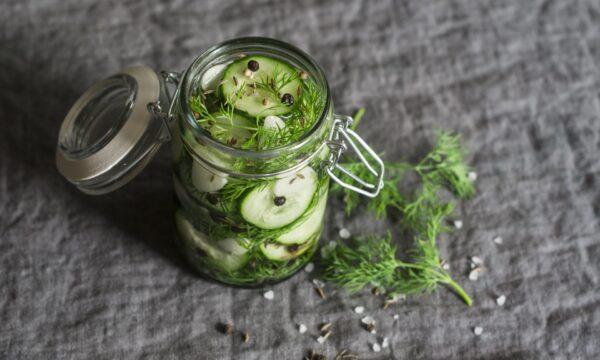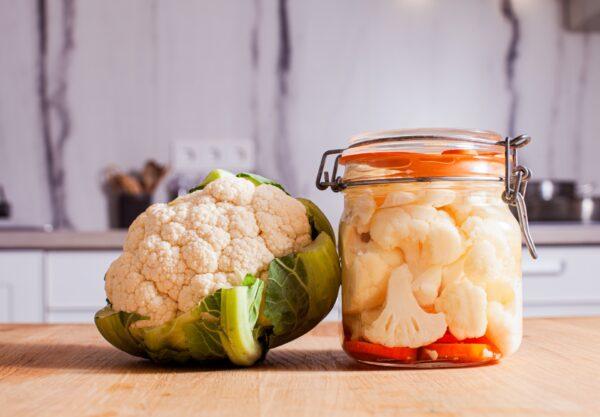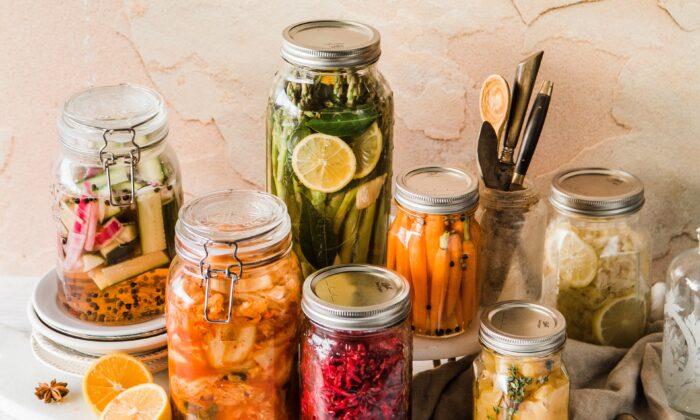Pickling foods in vinegar or fermenting them in brine is one of the oldest food preservation methods. The earliest archeological evidence comes from Ancient Mesopotamia and the Tigris River Valley more than 4,000 years ago.
Pre-refrigeration, pickling allowed vegetables and fruits to be eaten long after they were in season, and meats such as salt pork to be carried on long journeys and into wars. Pickling soon spread around the world: pickles are mentioned by Aristotle, in the Bible, and in Shakespeare’s plays. Cleopatra and Queen Elizabeth I were prominent proponents of their health properties.
The wide adoption of electrical refrigeration in the 20th century meant pickling was no longer necessary for preserving food, but by then pickles were appreciated for their taste, and so the method has lasted.
The 1893 edition of “Mrs. Beeton’s Everyday Cookery and Housekeeping Book” has a number of inspiring and achievable recipes ranging from gherkins and herrings to nasturtiums as an alternative to capers.
Mrs. Beeton also includes a warning against purchasing “inferior” commercially produced pickles, as copper sulphate was used to give a vivid, but unfortunately quite toxic, color. Anxiety over food adulteration reached dizzying heights in the Victorian age, with dangerous and even poisonous substances added to foods to enhance color and flavor, or eke out more expensive ingredients.
Almost Instant Cucumber Pickle

- 1 tablespoon vinegar (apple cider, white wine, or rice)
- 1 tablespoon cold water
- 2 teaspoons sugar (white, raw, or soft brown)
- 1/4 teaspoon salt
- 1 cucumber, washed (peeled, or not, depending on variety)
Thinly slice in the cucumber. Stir gently.
An even more instant result is obtained by marinating the cucumber slices in some liquid from a jar of pickles.
Finely chopped dill, mint, or chives can be added. More (or less) vinegar, water, sugar, or salt can be used to taste.
This can be made during the day and refrigerated, covered, until dinner, or assembled while the rest of the meal is being prepared. Drained, these crunchy slices can be used on burgers and in sandwiches and salads, or just enjoyed on their own. They can be stored in the fridge for a few days, but become softer.
Cauliflower Pickle

- 1 medium cauliflower, broken into florets
- 1 onion, peeled and cut into 8 wedges (about a cup)
- 1/3 cup salt
- 5 cups vinegar (white)
- 3/4 cup sugar (white or raw) or 1/2 cup golden syrup
- 1 teaspoon turmeric
- 1 1/2 tablespoons mustard seeds (or coriander seeds, or a mixture)
- 2 red chilies, halved lengthwise
- Glass jars with plastic-plated lids (I reuse medium-sized, 16-ounce pickle jars)
Sprinkle with salt, stir a few times, and leave in a cool place for three hours.
Drain vegetables.
Mix vinegar, sugar or syrup, turmeric, seeds, and chili, and bring to a boil.
Add vegetables and cook gently for about 5 minutes. This depends on the size of the florets. They need to be just cooked through, not mushy.
Using a slotted spoon or soup ladle, put vegetables (not liquid) into hot jars.
Bring spiced vinegar up to the boil again and pour into jars to cover the cauliflower and onion.
Seal the jars. Let cool and then store in refrigerator for at least a week.
This makes about three jars, depending on the size of the cauliflower, onion, and jars.

